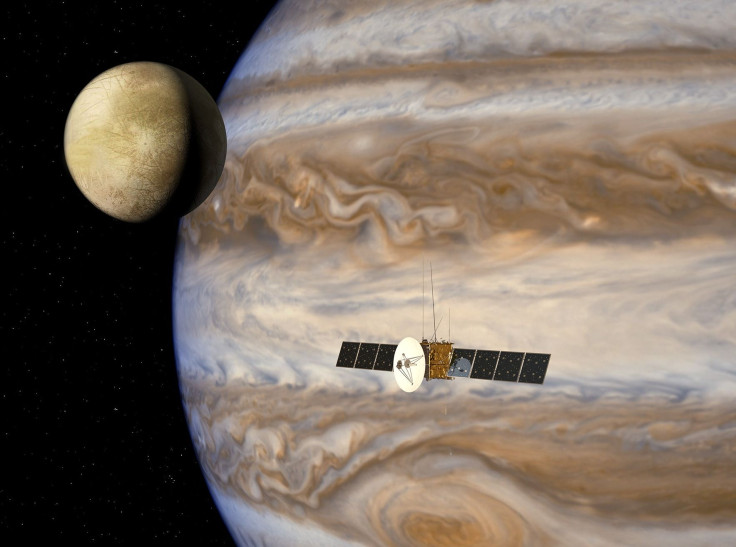ESA's Jupiter Mission: NASA Approves Science Instruments For JUICE Mission

NASA announced Saturday it had approved the suite of science instruments that it would provide for the European Space Agency's Jupiter Icy Moons Explorer (JUICE) mission, which recently moved from the drawing board to the construction phase. NASA's total contribution to the mission — scheduled for launch in 2022 — would add up to just over $114 million.
"We’re pleased with the overall design of the instruments and we’re ready to begin implementation,” Jim Green, director of the planetary science division at NASA headquarters in Washington, D.C., said in a statement. “In the very near future, JUICE will go from the drawing board to instrument building and then on to the launch pad in 2022."
Read: ESA's Jupiter Mission Enters Construction Phase
The JUICE spacecraft is expected to arrive at the Jovian system in 2029, where it will spend three-and-a-half years in orbit around the planet. ESA also plans to briefly put the probe in orbit around the giant Jovian moon Ganymede — a maneuver which, if successful, would mark the first time any moon other than our own has been orbited by a human-made object.
The mission is deisgned to not only shed light on the atmospheric dynamics of the largest planet in our solar system, but also to provide crucial insights into the environments of its many moons.
In order to do so, JUICE will carry a suite of 10 science instruments. NASA will provide the Ultraviolet Spectrograph (UVS), and subsystems and components for two other instruments — the Particle Environment Package (PEP) and the Radar for Icy Moon Exploration (RIME) experiment.
"The UVS was selected to observe the dynamics and atmospheric chemistry of the Jovian system, including its icy satellites and volcanic moon Io," NASA said in the statement. "With the planet Jupiter itself, the instrument team hopes to learn more about the vertical structure of its stratosphere and determine the relationship between changing magnetospheric conditions to observed auroral structures."
The PEP, which would consist of six sensors, will be used to create a 3D map of the plasma system surrounding the gas giant, while the RIME experiment's ice penetrating radar would be designed to penetrate the surface of Jupiter's icy moons and reveal subsurface structures. Scientists expect that doing so would reveal further details about the habitability of the Jovian moons, especially Europa.
NASA hopes that observations by instruments on board JUICE would complement those made by its planned Europa Clipper mission, which, after its launch in 2020, seeks to orbit Jupiter as frequently as once every two weeks, conducting a total of up to 45 flybys of Europa during its primary mission.
"The missions are like close members of the same family. Together they will explore the entire Jovian system,” Curt Niebur, program scientist at NASA headquarters, said in the statement. “Clipper is focused on Europa and determining its habitability. JUICE is looking for a broader understanding how the entire group of Galilean satellites formed and evolved."
© Copyright IBTimes 2024. All rights reserved.






















